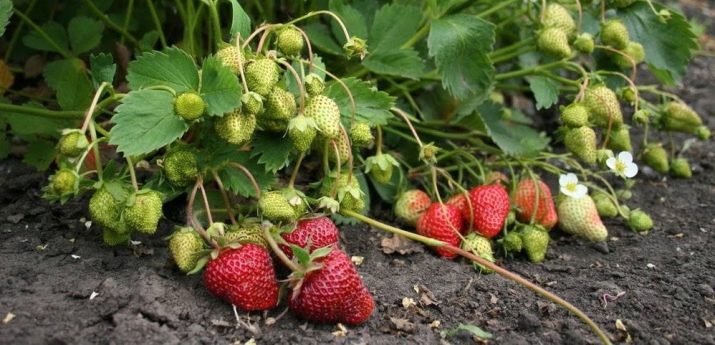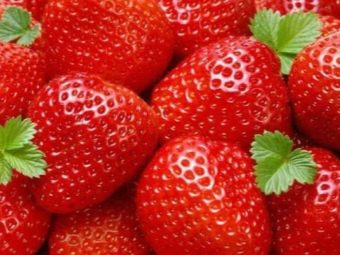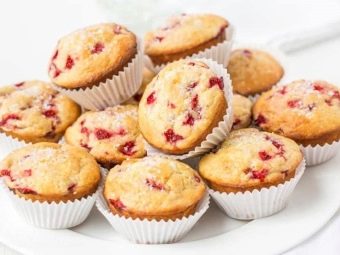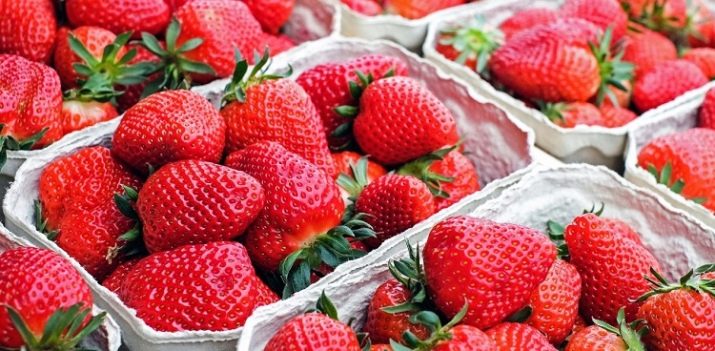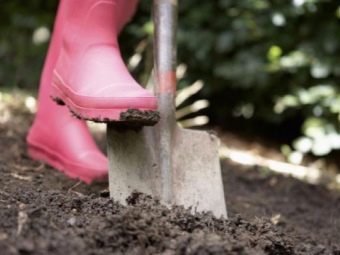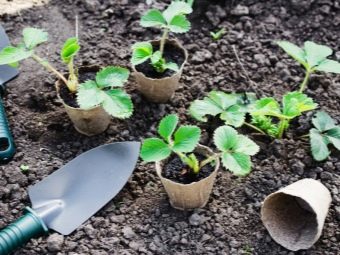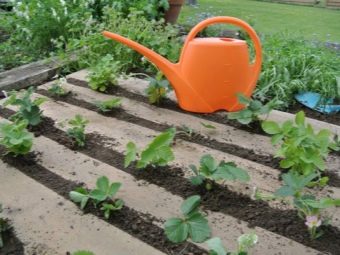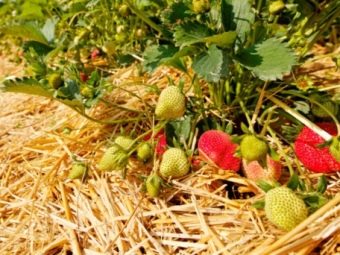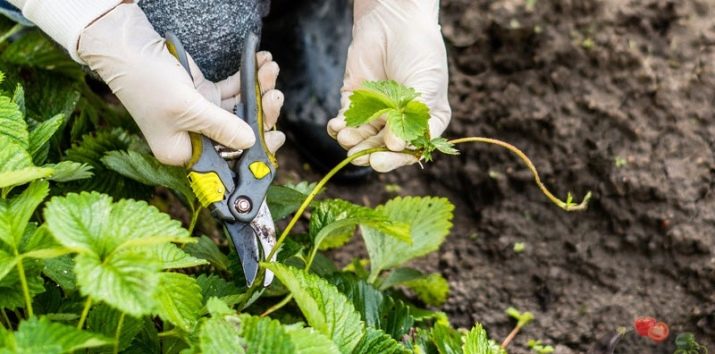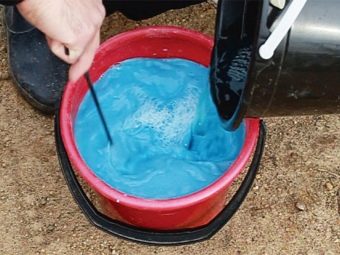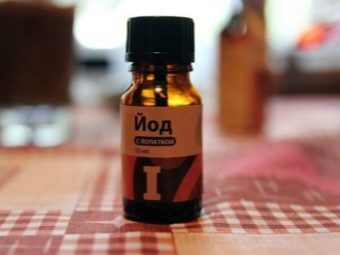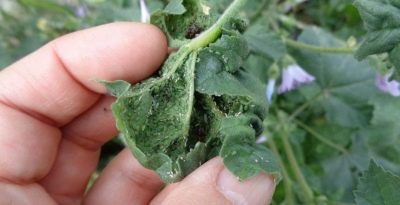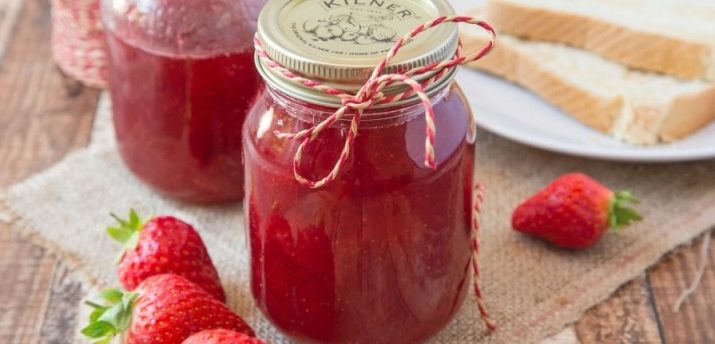Strawberry "Crown": characteristic varieties and cultivation
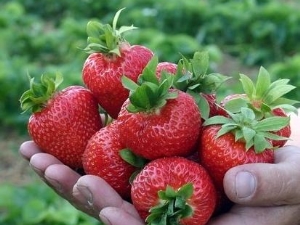
The variety of strawberries “Korona”, although it does not occupy a leading position, is quite a worthy choice.Its main advantage is the ability to easily tolerate low temperatures, as well as bear fruit throughout the year if this strawberry is grown at home.
Variety description
Strawberry "Crown" was bred more than forty years ago in Holland. Despite foreign roots, this garden strawberry quite organically fit into Russian realities: the variety is able to withstand traditional winter temperatures down to -22 ° C without additional shelter.
This remontant berry, and this means that you can get a harvest almost throughout the year - the strawberries will bear fruit a second time, and then the third.
Shrubs are formed fairly small, but the leaves - large and concave. Peduncles powerful and impressive. The weight of one berry varies from fifteen to thirty grams, and a kilo of strawberries is usually collected from one bush. Fruits look like small cones, even hearts painted in bright red color. It is not enough strawberry whiskers, that even the majority of gardeners are happy, because the culture is not trying to spread throughout the site.
The flesh of the "Crown" is very juicy and smelling delicious, the taste characteristics are also at the proper level. It is important to note that only the first berries are the largest, and in the future their size gradually decreases. Gardeners begin harvesting somewhere from the third week of June, and finish - in early August. Usually, the collection is carried out either early in the morning or late in the evening when the sun has already gone down.
Although strawberries are quite resistant to common fungal diseases and are well tolerated by low temperatures, things are not so smooth with transportation. It is important to note that the "Crown" is also excellently developed indoors. Culture requires high-quality lighting, heat, lack of drafts, loose, oxygen-rich soil.
This variety is used either fresh, or as a jam and jam, or used for toppings and desserts. It is not recommended to freeze the berries, because the fruits are too soft for such processing.
Advantages and disadvantages
The positive features of the Crown variety include frost resistance, stable satisfactory yields, and early ripening periods. Of course, such strawberries are appreciated for the opportunity to feast on the fruits for a long time, and for excellent taste. It is not particularly demanding on the composition of the soil and does not differ in the abundance of whiskers. Suitable "Crown" for almost any purpose, including for blanks.
As for the minuses, we can say that the variety does not survive during dry periods, and it is also impossible to transport it. Although Corona copes with powdery mildew, the culture often suffers from the fact that the root system begins to rot - strawberries are affected by white spot and gray rot. For some, the disadvantage is that the fruit cannot be frozen. Perhaps, for beginners, the problem will be the fact that you need to water strawberries regularly.
Landing rules
Strawberries “Crown” are planted either in a one-line pattern (20x40 cm) or in a two-line (20x40x60 cm). Landing is most often carried out in the early spring in the evening, when the sun has already gone beyond the horizon. Beforehand, it is necessary to dig up the ground well and form high beds, the width of which varies from one to one and a half meters.
After the grooves are formed, all the soil is watered very carefully. The seedling "Crown" is carefully placed in the hole, the roots are straightened and all sprinkled with earth. Then the soil in each bush should be sprinkled with two or three tablespoons of wood ash. Planting ends with another watering, as well as mulching with straw or sawdust.
It should be mentioned that, according to the rules of crop rotation, strawberries are planted where peas and beans were previously grown. The same beds where potatoes, tomatoes, cucumbers and cabbage grew are not recommended.
Care features
Caring for the "Crown" in principle is traditional: dressing, watering and loosening. To loosen the bed falls to a depth of seven to eight centimeters in cases where a dense crust forms on the surface. This procedure facilitates the transport of oxygen to the root system. Watering is usually done in the morning every three days. This should be done carefully, making sure that the liquid is not on the leaves and the strawberries themselves.
The temperature of the water used should range from 20 to 25 degrees Celsius. If it's sunny outside, then you can simply use the water that has warmed up for the whole day. In the case when the rains begin, irrigation is postponed until the moment when the ground is completely dry. By the way, the need for watering can be determined by the condition of the bush itself - if the sheets began to dry out, it means they lack moisture. The amount of water for irrigation of one square meter of blooming beds is 20 liters, and then it is reduced to 10 liters.
The procedure is completed by mulching between rows using straw, peat or sawdust. At the same place, this variety is allowed to grow only four years, and then it is worth picking a new plot for the crop.
Strawberry "Corona" requires the introduction of nitrogen, potassium and phosphorus. From organics it is best to choose wood ash and cow dung. The first feeding is carried out when the strawberries are just planted. At this stage, ash is usually introduced. Then it is necessary to fertilize the "Crown" when the first sheets start to appear. To do this, one tablespoon of nitroammofoski diluted in ten liters of water. Watering is done very carefully, because not a drop of liquid should not fall on the sheets.
The next time fertilizers are applied when the fruits are already forming. To this end, two grams of potassium nitrate are dissolved in ten liters of liquid. Fertilizer should be applied under the roots, again, without touching the sheets. Finally, thinned plants after harvesting the fruit is recommended to pour ten liters of cow manure mixed with a glass of wood ash.
From time to time, the Crown's mustache is trimmed with a sharp shears to stimulate yield, but there is no need for too frequent a procedure. In the fall, diseased leaflets are necessarily removed again with the help of a secateur. You can not tear off the leaves with your hands, since there is a high probability of damage to the socket and even the root system of the culture. All green residues must be burned, otherwise when using them as mulch, insects can multiply and cause diseases. The cutting procedure must be completed by applying organic fertilizer.
Of the diseases most common white spot. You can determine this disease by looking at the condition of the leaflets: if brown spots appear on them, which then begin to increase in size and turn white in the middle, then most likely this is it. To cope with the problem will be two ways.
- One-percent Bordeaux liquid is used to process the bushes before flowering, as well as in the middle of summer.
- A ten percent iodine solution in an amount of ten milliliters is dissolved in ten liters of water. The resulting liquid is treated with "Crown".
It will be possible to help the diseased plant and with the help of "Falcon" - ten milliliters of the product is diluted in ten liters of water. Also, this variety is exposed to red rot, in which case the leaves of the plant acquire a blue tint. It is possible to treat this disease with the help of the store preparation "Fundazol".
Brown strawberries indicate the occurrence of gray rot. To eliminate it, apply "Derozal" and "Topsin." To prevent gray mold disease, when brown spots covered with down are formed on the berries, be sure to follow the planting pattern so that the bushes do not fit too thick, and also control soil moisture, for example,using mulching and making shelters in case of rain. You can try spraying strawberries with chlorine dioxide dissolved in water.
The main pests that are dangerous for this variety of strawberries are aphid, mites, weevils and nematodes. You can eliminate them, if you spray planting tincture of garlic.
Preparations for the winter starts in the last week of August. First, the antennae and leaflets are cut, after which the culture is sprayed with Bordeaux liquid. Just before the frosts, the Crown is covered with humus just in case. Often, the problems of the berries are created by birds, which are taken to scare away by placing a scarecrow next to the landings.
Gardeners reviews
According to summer residents, Korona can easily survive the winter even without shelter and open a new season without dried leaves. In the spring begins a powerful growth and the appearance of flowers. However, too high temperatures, reaching up to 30 degrees, lead to the rapid end of the strawberry season. If you can not organize drip irrigation, then irrigate this variety will have every day. It is also bad that sometimes the first few berries grow large, and then significantly decrease in size.
Indeed, by the end of the harvest period, the size of the berries decreases, but this allows them to be used for jam, jams and other preparations. The taste of the "Crown" is not bad, the aroma is very pleasant.
Some gardeners call the Crown their favorite variety and praise it for its delicious berries, extensive harvest and relative ease of care. The simplest care is as follows: in the fall and spring, the beds are fed with humus and mineral solutions, and in July - with wood ash. Watering is carried out using a drip system, also used mulching, for example, a film of polyethylene. For the winter, "Crown" wrap is not necessary, it will be enough to trim the mustache and sprinkle bush with dry leaves.
In the next video, see the technology of planting strawberries on black agrofibre.

